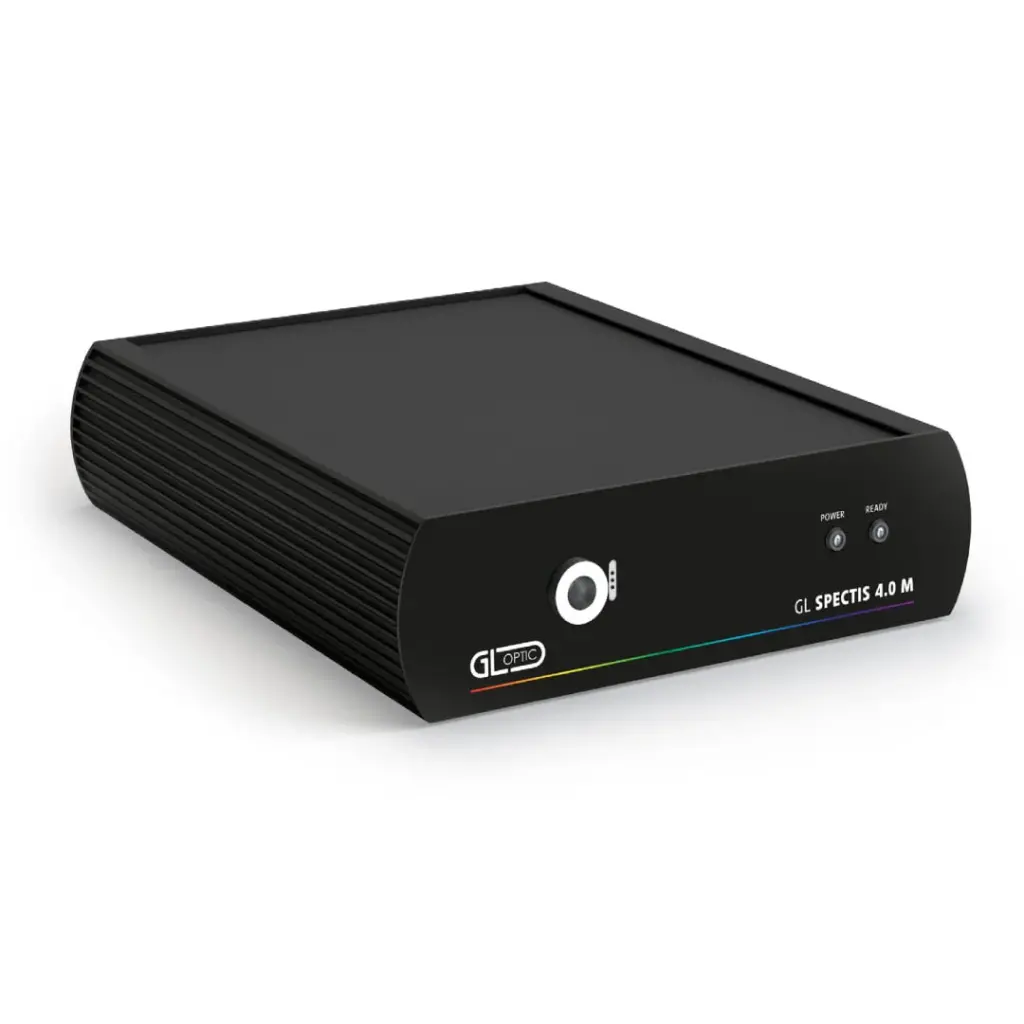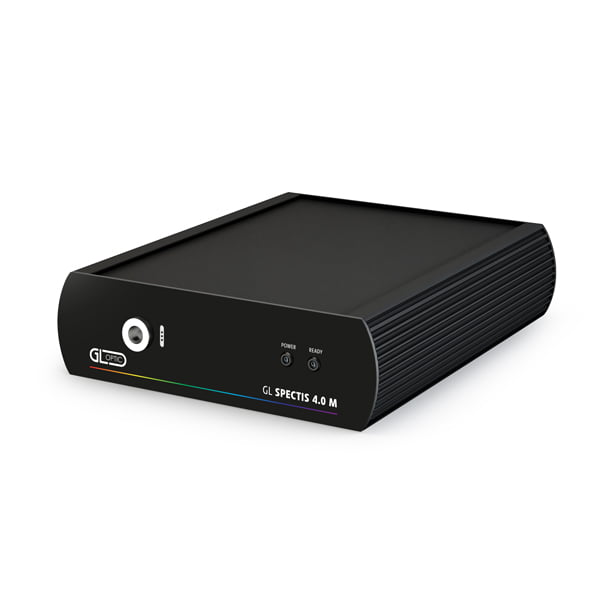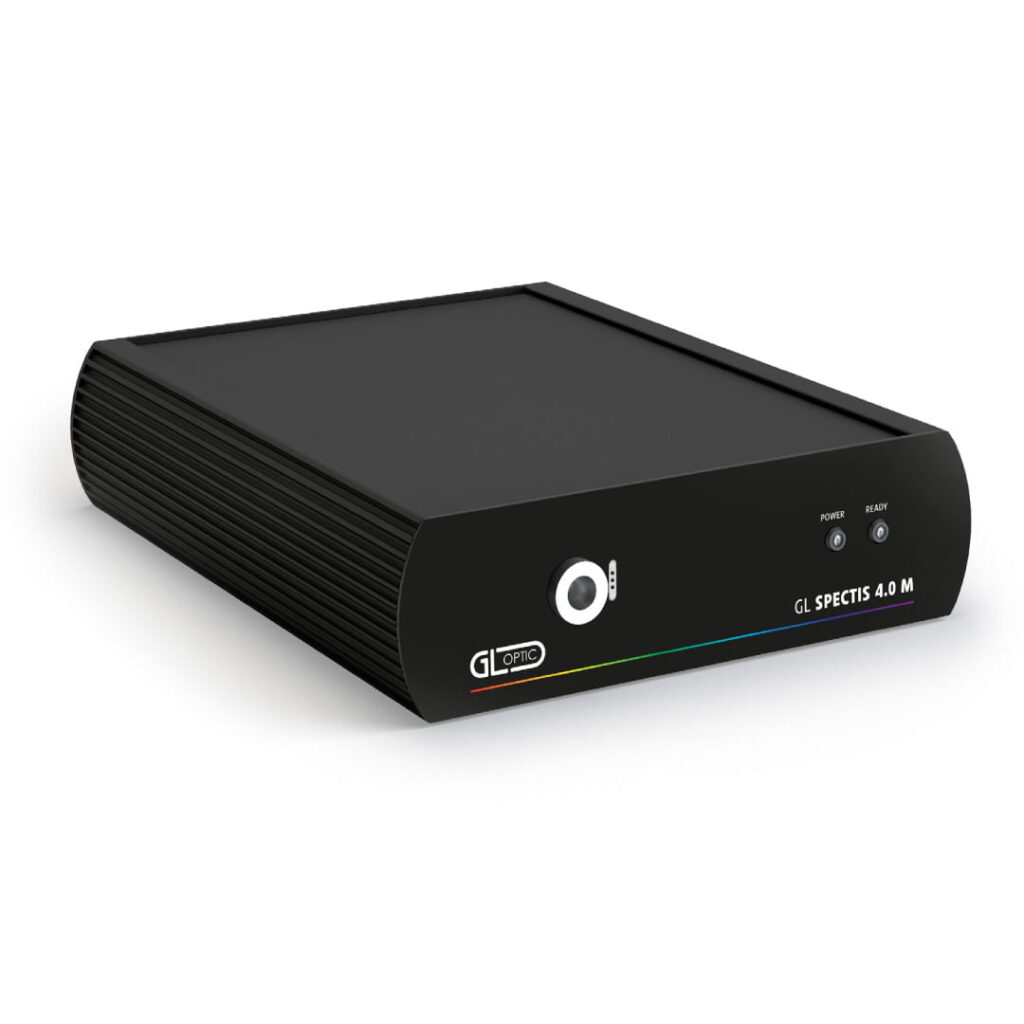Any questions or would you like to order this product? Do not hesitate to contact us
Product categories
Filter the products and categories by showing only certain partners.
New level of high-precision testing of light sources
The main objective of the spectroradiometer’s design was to provide a new modular technology for measuring optical radiation. The goal was to create an instrument that could be adjusted to each customer’s unique requirements while still retaining accuracy comparable to that of a laboratory.
High-end spectroradiometer
When thermal stabilization is directly given to the detector, it lowers noise and dark current values, which enhances the detector’s ability to measure low-level signals, particularly those in the ultraviolet (such as LED UV-C). In the application range, the solution will also provide independence from the surrounding temperature.
By adjusting the aperture and filters, the variable optical path module guarantees flexibility in the system’s optical property adjustment to the nature of the measured signal. This method typically eliminates the need to install a separate measuring probe for each application by enabling the user to readily adjust the instrument to specific measurement needs. all the while keeping all optical path configurations’ calibration settings intact.


The latest technology
The state-of-the-art spectroradiometer GL SPECTIS 4.0 M has the newest optical solutions for accurate light quality control in a range of applications. It has a Peltier module, which lowers signal noise and dark current levels to reduce measurement uncertainty for demanding measurement applications in the lab or industrial setting.
Flexibility for every industry
GL SPECTIS 4.0 M’s universal modular design makes it an excellent option for quickly creating a specialized measuring device. For particular purposes, it is possible to increase the spectral range by adding an additional filter. Radiant power and total luminous flux can be measured when coupled to an integrating sphere. In conjunction with telescopic probes for brightness and radiance, a specialized assessment of risks associated with optical radiation and light quality can be carried out.
Precise factory calibration
We respect accurate calibration techniques and clever system architecture. Every spectroradiometer is calibrated separately, and a number of pre-calibration steps, including wavelength calibration, non-linearity correction, and stray-light inspection, are carried out prior to the absolute spectral calibration procedure.
GL SPECTIS 4.0 M Usage
This measuring device was created to satisfy certain needs in cutting-edge applications. Its extended spectral range (UV–VIS–NIR) is 200–1050 nm. It comes with a multi-step, traceable factory calibration and high-performance optical components. The easy integration of production testers or stationary laboratory measuring stands is facilitated by the availability of on-demand rack housing. Operational stability and dependability are guaranteed by Ethernet connections. A selection of GL OPTI PROBES with fast connectors offers a level of simplicity never seen before.
Assessment of photobiological safety in the UV range
Precise measurements about the actinic effects of optical radiation and photobiological safety can be performed with this module. UV measurements are carried out by GL SPECTIS 4.0 M UV, which has a high optical resolution of less than 1 nm (FWHM). The apparatus has the capability to measure absolute irradiance values within the 200 nm to 400 nm range through calibration.
In order to evaluate the photobiological risk and validate radiation sources used for medical and disinfection purposes, it is imperative to improve the quality of UV measurements.
Professional LED characterization
This top-of-the-line spectroradiometer is ideal for characterizing LEDs since it can be used with any of our goniometer systems and integrating spheres to perform measurements that meet CIE 127:2007 and CIE 025/E:2015 standards. It is the perfect tool for measurements verifying IES LM-79-08 and other international standards due to its excellent accuracy and resolution.
GL SPECTIS 4.0 M Features
Benefits of modular technology
The capacity to modify the system’s and the spectroradiometer’s configuration to meet the unique requirements of each customer is the main advantage of the device’s modular design. Additional modules can be added to the machine to increase its capability if needed, even months after purchase.
Variable optical path
By adjusting the aperture and filters that affect the readings, the variable optical path module enables the optical route to be adjusted to the characteristics of the measured signal. This technique eliminates the need to switch to a specialized measuring probe in order to swiftly adjust the instrument to certain measurement requirements. all the while keeping all optical path configurations’ calibration settings intact.
Thermal stabilization module
The method of thermal stabilization of detectors in GL SPECTIS 4.0 M devices relies on directly stabilizing the sensor using a Peltier cell, which eliminates the need to cool the complete apparatus. The module’s purpose is to preserve the detector’s linearity, noise level, and dark current value while facilitating low-level signal readings. Reduced temperature variations lead to a decreased level of uncertainty in the measurement that was obtained.
GL SPECTIS 4.0 M Metrics
Our spectroradiometers are individually calibrated and set to provide accurate findings for almost any realistic optical radiation measurement application. Using the accompanying software, measuring and reviewing the findings takes only a few seconds.
Using the GL SPECTIS 4.0 M with a suitable probe, you can measure any of the following optical quantities:
- [lx]/[W/m2] Illuminance and irradiance
- [lm]/[W]: luminous flux, radiant power
- CRI: color rendering index according to the CIE
- CCT-correlated color temperature according to the CIE
- Color-chromaticity coordinates of the CIE 1931, CIE 1964 and CIE 1976
- Fidelity and Gamut: method for evaluating light source color rendition according to IES TM-30
- PAR/PPFD: photosynthetically active radiation measurements for horticulture
- EML: biological effects of light on humans in equivalent melanopic light
+ plenty more!
The GL SPECTIS 4.0 M spectrometer is very accurate and suitable for any application.
PDF and available downloads
You can download the information on this page and the available downloads as one PDF file. There is one download available for this product.
Enter your email address once to gain access to all downloads on the PEO website.
There is one download available for this product.


